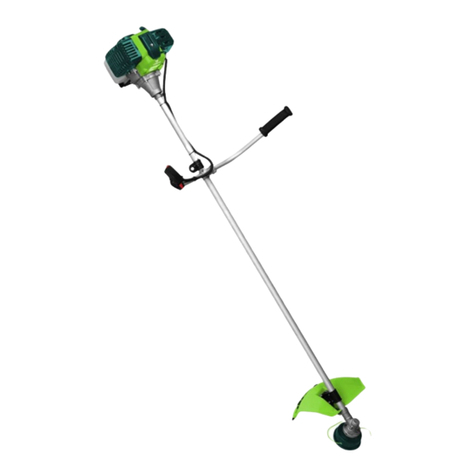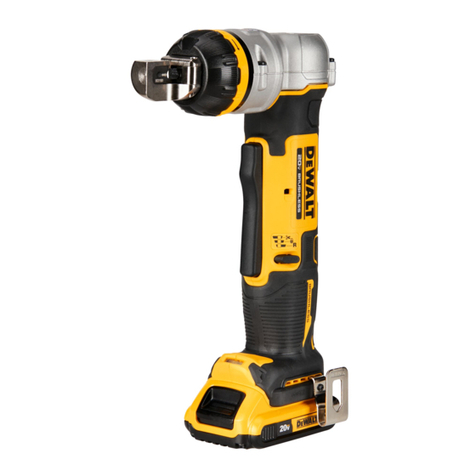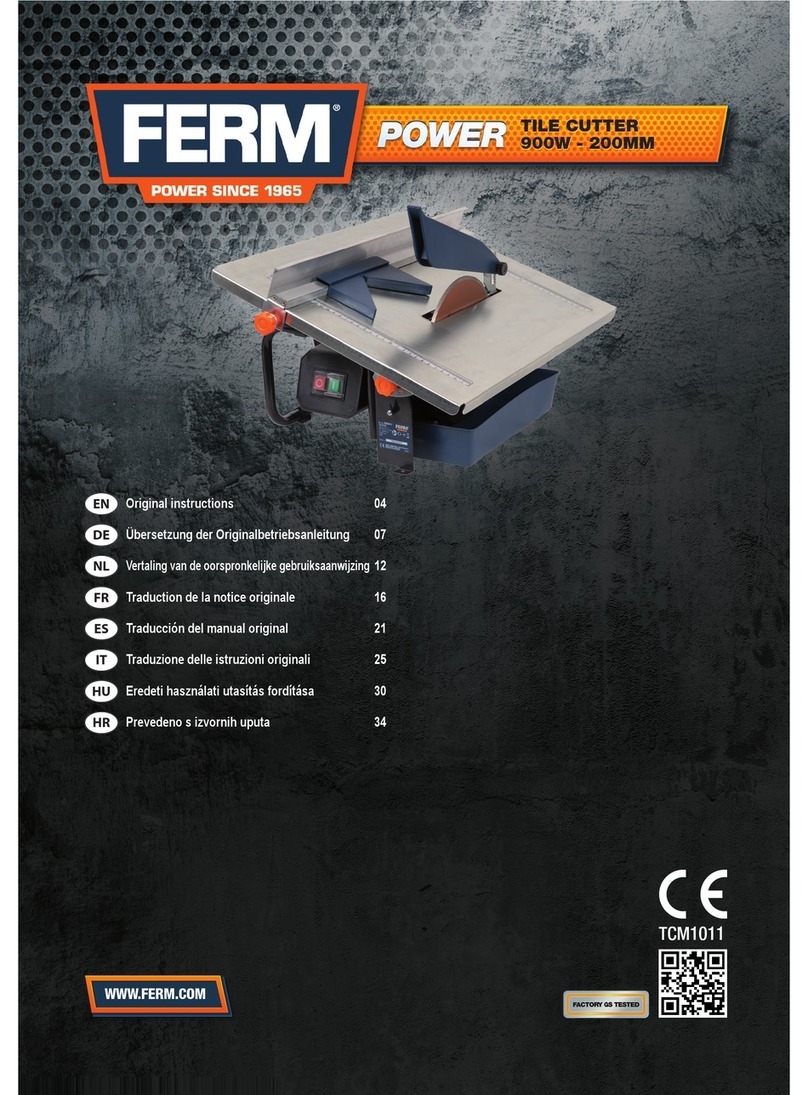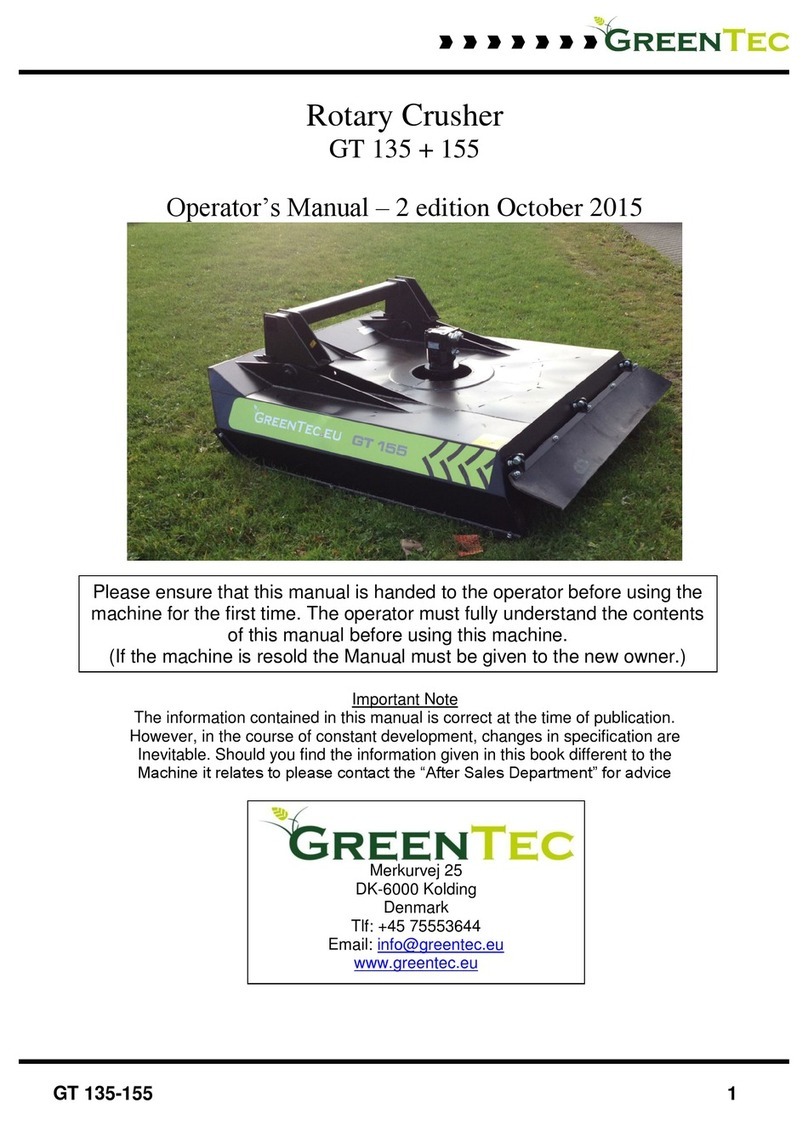Robland NZ 3200 - AXIS ERGO User manual

NZ 3200
NZ AXIS ERGO
Manual
Betriebsanleitung

–English–Deutsch
NZ3200 - AXIS ERGO V1110 1
Index
General Information 2
Important instructions when ordering spare parts 3
Attention 3
Safety and maintenance instructions 3
Danger List 3
Operating instructions 4
Normal and prohibited use 5
Explanation of acoustic levels 6
General Dimensions 6
Technical Data 7
Transportation of the machines 8
Electrical Connection 9
Mounting of the sliding table 9
Starting up the machine 10
Changing main sawblade and scorer sawblade 11
Use and adjustment of the riving knife 12
Lower sawblade cover 12
Adjusting the main sawblade and scorerblade 13
Mounting of the cross-cut table 15
Mounting of the cross-cut fence 15
Adjusting the cross-cut fence 16
Mitre fence 17
Use of the parallel fence 17
Calibration of the scale on the parallel fence 18
Mounting of the roller support 18
Using the sawguard 19
RPM indicator lights 20
Belt tension and speed changing 20
Maintenance of the machine 21
Problems: causes and solutions 21
Electrical components spares list 22
Option A5216 - Retro-t digital read-out for parallel fence 23
Option A5218 - Digital ip Stop on the cross-cut fence 25
Manual Axis Ergo 26
Electrical Diagrams 51
Exploded views 55

–English –Deutsch
2V1110 NZ3200 - AXIS ERGO

–English–Deutsch
NZ3200 - AXIS ERGO V1110 3
Important instructions
when ordering spare parts
Always mention the following items on your order:
- Type of machine
- Serial number from manual
- Part number and quantity
- Your reference and correct phone and fax number
Attention
Working with woodworking machines can be extremely dangerous if the safety instructions are not
followed.
It is recommended you systematically use the safety equipment installed on the machine.
Safety and maintenance instructions
Woodworking with machinery is a pleasant job that will give you a lot of satisfaction. Nevertheless,
working with a machine requires constant attention and care. Therefore, for your own safety, pay
attention to the instructions summarised in this chapter.
- The machine can only be used safely if the operator strictly follows the operating and safety
instructions.
- It is absolutely essential to read this manual before using the machine so you know how the
machine works and what its limitations are.
- Always make sure that all safety devices are tted to the machine and that the machine is
connected to a dust extraction system.
- Provide sufficient space around the machine and good lighting in the workshop.
- When changing the tools or when doing a maintenance job, the machine must always be
disconnected from its power supply.
- Knives and tools which are not correctly sharpened or are in bad condition not only diminish the
quality of the work, but also increase the risk of accidents.
- Always wear suitable clothing. Loose or torn clothes are very dangerous.
- Keep children away from the machine and the workshop.
- To avoid damaging your hearing we recommend you wear ear protection when working with the
machine.
Danger list
This list was based on parts 1 and 2 of EN 292 and annexe A of part 2.

–English –Deutsch
4V1110 NZ3200 - AXIS ERGO
Operating instructions
The following recommendations for safe working procedures are given as an example, on top of all
information characteristic of this machine.
- When working with the machine, safety equipment must be used.
- Nevertheless, the user must also follow the operating instructions to avoid accidents.
1 Training of machine users
It is absolutely essential that the panelsaw user receives thourough training regarding operating and
adjusting the machine.
In particular:
a) the risks involved in working with the machine;
b) the operating principles, the correct usage and adjustment of the machine;
c) the correct choice of the tools for each operation;
d) the safe handling of parts to be processed;
e) the position of the hands in relation to the sawblade;
f) storing the workpieces safely before and after sawing them.
2 Stability
In order to be able to use the machine safely, it is essential to place it stably on the ground or other
stable surface.
3 Adjustment and installation
a) Disconnect the machine from the power supply before every adjustment.
b) The recommendations of the manufacturer must be followed when adjusting and installing the
tools.
c) The tools must be suited to the material being cut to assure safe and efficient sawing. The tools
must be correctly sharpened and installed.
4 Handling of tools
In order to avoid severe cuts, safety measures must be taken when handling the sawblades.

–English–Deutsch
NZ3200 - AXIS ERGO V1110 5
Normal and prohibited use
The panelsaw is designed for the following work and is equipped with protective devices for
these processes only. It is not designed to work materials such as ferrous or non-ferrous metals, work
different from that stated below is prohibited.
- Ripping with the parallel saw fence with/without the sawblade tilted and the fence upright or in the
low position.
- Right-angled or mitre cuts with the 90° fence mounted to the sliding table with tilted or vertical
sawblade.
- Cross-cutting workpieces using the adjustable stop on the 90° fence.
- Cutting panels or solid wood on the sliding table.
PROHIBITED USE
Following tasks are prohibited on the panelsaw :
- submerged cuts by removing the riving knife and/or guard;
- all types of cuts without using the table saw fence, the 90° fence or sliding table;
- Cutting large workpieces that exceed the machine capacity without using aids such as roller
supports.
REMAINING RISKS
Main risks on the panelsaw are :
- unintentional contact of the hand with the running sawblade;
- workpiece kickback
- tipping of the workpiece due to insufficient support.
NOISE REDUCTION
Main risks on the panelsaw are :
- The type and condition of the sawblade is important in keeping the noise level as low as possible.
- The material and the position of the safety devices are important in reducing the noise level.
- Using the correct speed of the sawblade for the type of material will reduce the noise level as well.
- The above does not negate the fact that extra safety equipment such as ear protection must be
used.

–English –Deutsch
6V1110 NZ3200 - AXIS ERGO
Explanation of accoustic levels
The values given are the emission levels; these are not necessarily the levels at which the operator
can work safely.
Although there is a link between the emission values and the exposition level, it cannot be used in a
reliable way to determine if supplementary measures should be taken.
NOISE INFORMATION
- measurements : as per ISO norm 7960
- as per annexe D
Workpost under load
Level continuous
accoustic pressure as
per index A
dB (A)
Level accoustic
power
dB (A) (MW)
Max. value accoust.
pressure as per index
C (instantaneous)
dB
Saw 91 105 (26,3) < 130
The dust emission examination was carried out by the following approved body :
Prünstitut für Holzstaubmessungen
Institut für Werkzeugmaschinen
Universität Stuttgart - Germany
Measurements as per DIN 33 893 (GS-HO-05)
Measurement values show that the TRK-value of 2 mg/m3 has not been exceeded.
Notication number and date : 08.03.1996/FPH-AZ : 029/95
General dimensions

–English–Deutsch
NZ3200 - AXIS ERGO V1110 7
Technical Data
Voltage V 230 - 400 - 230 mono
Motors three phase KW 5,5; (Option 7,5)
pk 7,5; (Option 10)
Saw diameter min.-max. mm 300-400
Max. depth of cut (dia. 400 min) mm 125
Max depth of cut at 45° mm 100
Tilting of main saw 90° - 45°
Max. cut capacity on right side mm 1525
Saw stroke mm 3200, Option 3800
Saw arbor diameter mm 30
RPM main sawblade 3000-4000-5000
Motor power scorer KW 0,94
RPM sawblade scorer 8200
Scorer diameter mm 120
Max depth of cut incisor mm 3,5
Tilting of scorer 90° - 45°
Sliding table dimensions mm 3200-2500-1700x400
Saw table dimensions mm 885x700 + 650x700
Diameter outlet mm 120 - 80
Net weight Kg 1050 (NZ3800: 1100 kg)

–English –Deutsch
8V1110 NZ3200 - AXIS ERGO
Transportation of the machine (Fig.1-2)
You will receive the machine in a crate made of heavy duty particle board panels, which can be easily
recycled.
After removing the sides and top panels of the crate, steel bars or rods can be placed in the 3 holes in
the machine frame (1).
By using hoist equipment the machine can now be lifted with a small crane of forklift truck, but severe
jolts must be avoided.
When the machine is placed on the ground, it is still possible to move it by removing the front cover
plate and placing a hand pallet truck in the two openings in the front of the frame (2).
The machine must be leveled in both directions to assure good sliding motion of the sliding table.
Two leveling bolts must be put in before the machine is placed on the oor : one bolt under the pivot of
the telescopic arm and the second under the electrical switch panel.
These bolts have to be set with the bolt head upside down. The two big leveling bolts (2) can be
reached by opening the machine access door. If possible, the machine must be placed on rubber
plates which act as shock absorbers and reduce the noise level.
Fig.1 Fig.2

–English–Deutsch
NZ3200 - AXIS ERGO V1110 9
Electrical connection (Fig.3)
The electrical connection must be carried out by a qualied electrician who is able to calculate exactly
the required wire cross-section and capacity of the workshop fuses.
Check that the main voltage of the machine corresponds with the voltage supply to your workshop.
Now open the electrical switch panel and introduce the cable. Connect the 3 phases to the
terminals on the connection block marked L1, L2, L3. If there is a neutral conductor (blue)
it must be connected to the terminal N.
Connect the earth wire (green-yellow) to the terminal marked with the earth symbol PE.
ATTENTION :
- Check rst if the saw spindle runs freely and if all safety devices are tted before starting the
machine.
- If the direction of rotation of the sawblade is not correct, the wires L1 and L2 must be exchanged
(clockwise direction of the spindle is correct).
- For safety reasons this must only be done without the sawblade on the spindle !
THERMAL OVERLOADS
The machine has overload protections on both saw and scoring motors. Should the motor be shut-off
by one of these protectors, it is necessary to wait a few minutes untill the overload has cooled down.
Mounting on the sliding table (Fig.4)
To obtain a good arrangement and function of the sliding table; it is vital that the machine is put on a
right level in both directions, with the help of a level, before putting the sliding table on the machine.
All the adjustments and arrangements are done in the factory. Simply put the table onto the frame with
the two lateral adjustment bolts (1) into the two lugs of the frame. Be sure that the girder rests well in
the height adjustment bolts. Now place the 4 big Allen bolts (3) and tighten well. In order to obtain a
good movement of the wood or the sliding table, the sliding table is set near to 2 mm above the sawing
table. The parallelism between the principal blade and the sliding table, can be corrected by using 2
bolts. After the adjustment, the 4 bolts need to be tightened well with a Torque wrench with a value of
7 kg. The adjustment in height of the sliding table can be done by using 8 bolts (2) but always with the
big bolts closed.
Fig.3 Fig.4

–English –Deutsch
10 V1110 NZ3200 - AXIS ERGO
Starting up the machine (Fig.5-6)
Turn the main switch (6.1) to “1” and ensure that the star-delta switch (4) is put in position “star”.
- To start the main saw motor push the start button (3).
- After about 8 seconds put the star-delta switch (4) in position “delta”. This time delay is needed to
let the motor gain its full speed before switching over to “delta”. When you forget to switch over from
“star” to “delta”, the motor will reach its full speed but will have no power and will be damaged.
- The scorer motor is started by pushing the start button (6); this is only possible with the main saw
motor running.
- By pushing the stop button (5) the scorer motor is stopped, when the emergency stop button (1) is
pushed both motors are stopped.
- The main saw motor is equipped with an automatic brake which slows down the motor within 10
seconds as soon as the machine is shut off.
WARNING:
When the machine access door is open, it is impossible to start up the machine.
The RPM indicator lights at the front of the main switch panel show the speed of the saw
spindle as soon as the machine is switched on with the main switch (1).
All fuses can be found inside the electrical switch panel and each time this panel is opened the
machine has to be disconnected from its power supply.
Fig.5 Fig.6

–English–Deutsch
NZ3200 - AXIS ERGO V1110 11
Changing main sawblade
and scorer sawblade (Fig.8-9)
Warning: Before changing sawblades always turn off the main switch.
Handle sawblades with care, to avoid serious cuts and injuries.
Push the sliding table to the rear and open the saw cover. Raise the main sawblade to its
highest position and put the key(2) into the saw arbor nut.
Put the locking pin in the opening of the sawtable and turn the arbor with the key (3) until the locking
pin (2) engages in the hole in the saw arbor pulley.
Now unlock the nut (1). Before tting the new sawblade ensure the blade and anges are clean. This
prevents wobbling of the sawblade.
Never forget, after the saw arbor nut has been tightened, to remove the locking pin from the pulley
before starting up the motor.
ATTENTION:
Only sawblade diameters from 250 to 400 mm are allowed on the machine.
The use of HSS sawblades is strictly forbidden on all panelsaws; only use carbide-tipped
sawblades.
The scorer sawblade is changed as follows: turn the scorer blade to the left and put the key (1) onto
the atened arbor. Loosen the bolt with the Allen key (2) and put the scorer blade on. After changing
the blade tighten the bolt.
WARNING:
All main sawblades which are used on the panelsaw must have two additional holes in the sawblade
body, to prevent the sawblade from loosening when the rotation of the saw arbor is stopped by the
brake on the motor.
The two little bolts in the xed saw arbor ange prevent the saw from coming off and may
under no circumstance be removed.
The dimensions of these holes can be seen in g. 11.
Fig.8 Fig.9

–English –Deutsch
12 V1110 NZ3200 - AXIS ERGO
Use and adjustment
of the riving knife (Fig.10)
The machine is equipped with two riving knives for the use of sawblades from 250 to 300 mm and 350
to 400 mm.
The riving knife has to be adjusted in such a way that over its entire length the gap between sawblade
and riving knife does not exceed min.3 mm and max.8 mm.
The riving knife can be adjusted in both vertical and horizontal direction.
The height setting has to be adjusted in such a way that the highest point of the riving knife never
exceeds more than 3 mm above the highest placed sawblade tooth.
After height adjustment always lock the central bolt (3) at a torque of 60 Nm. The 3 little adjustment
screws (2) are used for the exact setting of the riving knife in line with the sawblade.
For slotting or grooving the riving knife has to be adjusted in such a way that the upper part of the
riving knife is never set lower than the highest sawtooth in use.
Never remove this riving knife. Kickbacks are severe and very dangerous.
PROTECTION DURING THE CHANGING OF THE SAWBLADE
The access shutters of the blades are provided with a security system for the protection of the operator
changing the blades. The system has got a stop-switch that prevents unauthorised starting of the
engine with an opened shutter. For closure of the tray and to restart the machine, assure the lock on
the side is closed.
Lower sawblade cover
The lower sawblade cover has an extra safety device which will protect the user during sawblade
changing.
To open the lower cover, the upper part of the sliding table has to be slid to the back.
Now the two locks can be opened at both sides of the cover and the safety lever can be pulled up.
Only now can the sawblade cover be opened.
Fig.10 Fig.11

–English–Deutsch
NZ3200 - AXIS ERGO V1110 13
Adjusting the main sawblade and
scorer sawblade
Adjusting height (Fig.7)
- Changing the height of the main sawblade can be done with the help of push buttons.(4 and 5)
To recover the backlash of the transmission; always adjust the height of the blade in <<up>> mode.
- Changing the height of the scorer sawblade (g. 12) can be done with the handle (4) and the
lock nut (3). Release the lock nut and turn the handle (4) to the right to go up and to the left to
go down. After completing the height adjustment, close the lock nut (3). Turning the handle once
corresponds to a height adjustment of the scorer blade of 3 mm.
Adjusting the inclination of the saw unit (Fig.7)
The inclination of the main sawblade can be done with help of push buttons.(g. 7 - 7 and 8)
The inclination of the saw unit is visualized on the indicator or on the digital screen (g.7 - 6) for the
machines equipped with this part. The scorer blades automatically incline according to the main blade.
The saw unit can be inclined in angles of 45 and 90° and at those two points, there are mechanical
stops provided by the factory.
A lock handle allows to incline the blade in case the buttons do not react. This handle is located at the
back of the machine.
Alignment of scorer blade according to the main sawblade (Fig. 12, 15, 16)
To achieve a nice cut, without chipping in the interior part, it is necessary that the scorer blade is
perfectly aligned to the main sawblade. For adjustment in the cross-direction , turn the handle (5) in the
direction of the switch for left and the other way for adjustments to the right. After achieving this, close
the locking handle (6). The scorer blade is a blade in two parts, in addition with supplementary discs,
allows a variety of thickness, in order to adjust depending each working case.
Adapting in preference a scorer blade thickness to 0,05 mm more than the main blade. After achieving
this, test the adjustments; till obtaining a perfect result. (g. 15 en 16).
Fig.7

–English –Deutsch
14 V1110 NZ3200 - AXIS ERGO
1. The scorer sawblade is below level and does not work properly. There will be chipping on the
interior side.
2. The scorer sawblade is to far up, there will not be chipping but 2 excessive grooves.
3. The scorer sawblade is not aligned properly to the main sawblade. There will be a border on one
side and a waste on the other.
4. Correct setting of the scorer saw
It would be good to t the height of the blade only at a height necessary for an incision that would
cross exactly the laminated layer or overlay.
In case of extended softwood processing without use of the scorer sawblade, it is recommended to
remove the blade to avoid damage and dust projected by the main sawblade.
Blocking the sliding table (Fig.14)
- The sliding table can be blocked in two positions and with one block-system. This is vital for
example by loading of the boards or cutting along the parallel guide. The system is located on the
front-side of the sliding table. Pull the button (1) in your direction and turn to the right to liberate the
table. Pull the sliding table till end, the table will be blocked automatically when arriving in the exact
position. Continue this way to start working.
- When several movements are repeated consecutively,
it is possible that the bearing cage between the two
proles moves a little bit. We can note this as well by
a reducing travelling distance of the sliding table. To
proceed and achieve the normal travelling distance
of the sliding table, you can adapt the position of the
bearing cage: simply push the table with a few short,
light pushes against the buffer stop at the end of the
sliding table until the position of the ball carrier is
adjusted and the table can be moved again along its full
stroke.
Attention: cleaning and maintenance of the sliding table
It is vital to regularly blow away the saw- and other dust,
collected between the sliding table and the bearing
cage. Push the sliding table to the end, to get a better
reach towards the rails, the bearing cage and gliding
tracks. Oil serves to lubricate the sliding rails and is an
extra guarantee of good use and function. Fig.14
Fig.15 Fig.16
Not good
Good

–English–Deutsch
NZ3200 - AXIS ERGO V1110 15
Mounting of the cross-cut table (Fig.17)
The cross-cut table can be installed onto the sliding table, putting it in the notch at the back of the
sliding table. The xation of the cross-cut table can be done with the handles (2) and the telescopic
arm. The machine serves only to put the cross-cut table at the back of the sliding table. To place this
cross-cut table at the front of this sliding table, with a maximum at the centre, a longer tube for the
telescopic arm is needed. (option: tube of 2.5 m: Z482)
Mounting of the cross-cut fence (Fig.18)
The cross-cut fence has got a cone and the cross-cut table has got an attachment hole. To position the
supported guide onto the cross-cut table, place the fence with the pin into the attachment hole on the
front of the table.
Place the serrated knob (1) in order to attach it to the table.
Turn the adjustment bolts to the left or right in order to move the guide backwards or forwards to obtain
a good alignment to the main blade.
After these adjustments, tighten well the both bolts. The cross-cut fence can be used in different
positions at the front, back or inclined.
Fig.17
Fig.18

–English –Deutsch
16 V1110 NZ3200 - AXIS ERGO
Adjusting the cross-cut fence (Fig.19-20-21)
Each and every time changing a blade with different specications it is vital to calibrate the scale of the
length supported guide according the following application. Block the knob (1) with the 300 mm piece
and adapt the graduated scale till obtaining 300 mm in the lens.(g. 19,2) Continue the same way with
the digital stop option, pressing << SET >> and the stop will be automatically adjusted. Test the setting,
making a little cut just to verify. For the work with the telescopic extension of the guide (permitting to cut
at approximately 3000 mm), place the knob (g. 20-21,3) on the exact measurement of 2050 mm, so
that the scales corresponds on the two different parts. The reading can be done on the index (g. 20,4),
on the xed part of the length supported guide. To verify if the effective measurements correspond to
the regular dimensions mentioned in the index; continue with a test, placing the two knobs at a certain
dimension and check if the maintained measurements correspond with the ones of the index.
When, after some time, the wooden splitter protection cap at the front on the cross-cut fence is cut
away, a new one has to be made according diagram g. 22
Fig.19
Fig.21 Fig.22
Fig.20

–English–Deutsch
NZ3200 - AXIS ERGO V1110 17
Mitre fence (Fig.23)
The at T-nut which holds the vertical rod of the wood clamp is factory set and has to stay in its position
to make the angle scale correspond.
To set the required angle : unlock the rod (1) and the auto-release handle (2). To slide the
fence (5) towards the sawblade, unlock the two handles (3). Reading the angle set is done at the back
of the aluminum bracket (4).
Use of the parallel fence (Fig.24)
When the serrated knob (3) is unlocked and the handle (1) is lifted up, the complete parallel fence can
be moved.
To lock the fence in position push the handle (1) down.
The micrometric adjustment is achieved by locking the knob (3), by holding the handle (1) in the
upright position and by turning the serrated knob (2).
After the adjustment, push handle (1) down to lock the fence in place. When cutting small workpieces
with the sawunit inclined at 45°, the fence should be used in the low position.
Simply unlock the eccentric clamping handle (4), slide off the fence and slide it back on in the low
position.
Lock the fence with the eccentric clamping handle (4).
When cutting solid wood using the parallel fence, to avoid the wood getting stuck between the fence
and the riving knife (resulting in a hightly dangerous kickback) it is recommended to
reposition the fence so that its end protrudes just past the end of the riving knife.
Fig.23 Fig.24

–English –Deutsch
18 V1110 NZ3200 - AXIS ERGO
Calibration of the scale on
the parallel fence (Fig.25)
Each time a new sawblade is tted the parallel fence scale has to be calibrated to the new
sawblade.
By cutting a sample and measuring its exact length, the scale can be adjusted so that the exact
measure corresponds with the front side of the fence.
After the screw (1) has been loosened the scale can be adjusted. To avoid the fence contacting the
sawblade while it is revolving, the stop ring (2) has to be adjusted.
Slide the fence to about 10 mm from the sawblade.
Now slide the stopring (2) across the round guide bar (3) until it comes up against the
casting of the fence. Tighten the lock screw on the stop ring.
Mounting of the roller support (Fig.31)
Put the hinge plate (1) of the roller support onto the frame using the bolts (2). The roller has to be
adjusted to the height of the saw table using the lower stopring.
The whole support can be lowered and can be swung aside after opening the knob (4). If the roller
support has to be taken off, simply lift it off its hinges.
Fig.25 Fig.31

–English–Deutsch
NZ3200 - AXIS ERGO V1110 19
Using the sawguard (Fig.26-27)
According norms and applicable prescriptions, the sawguard always should be positioned, just
allowing the passing of the wood or work pieces.
The adjustment of height can be done with the handle (1 and 2), using the previously adapted
graduated scale (3). The guard can not go under the denite measurement. Allowing to block the
protection to avoid it goes up on its own. The handle (2) as well serves as a height stop to avoid that
the protection goes up to high according to the handled work piece.
The guard has got a shifting skirt, remove the screw (1) then the little skirt and place the larger one,
closing again with the screw.
Attention: it is evident that for special tasks, it is necessary to make or build specic protection.
Fig.26 Fig.27
Other manuals for NZ 3200 - AXIS ERGO
1
This manual suits for next models
1
Table of contents
Languages:
Other Robland Cutter manuals
Popular Cutter manuals by other brands

Milwaukee
Milwaukee HEAVY DUTY M12 FCOT Original instructions

Rothenberger
Rothenberger SUPERTRONIC 2 SE Technical data
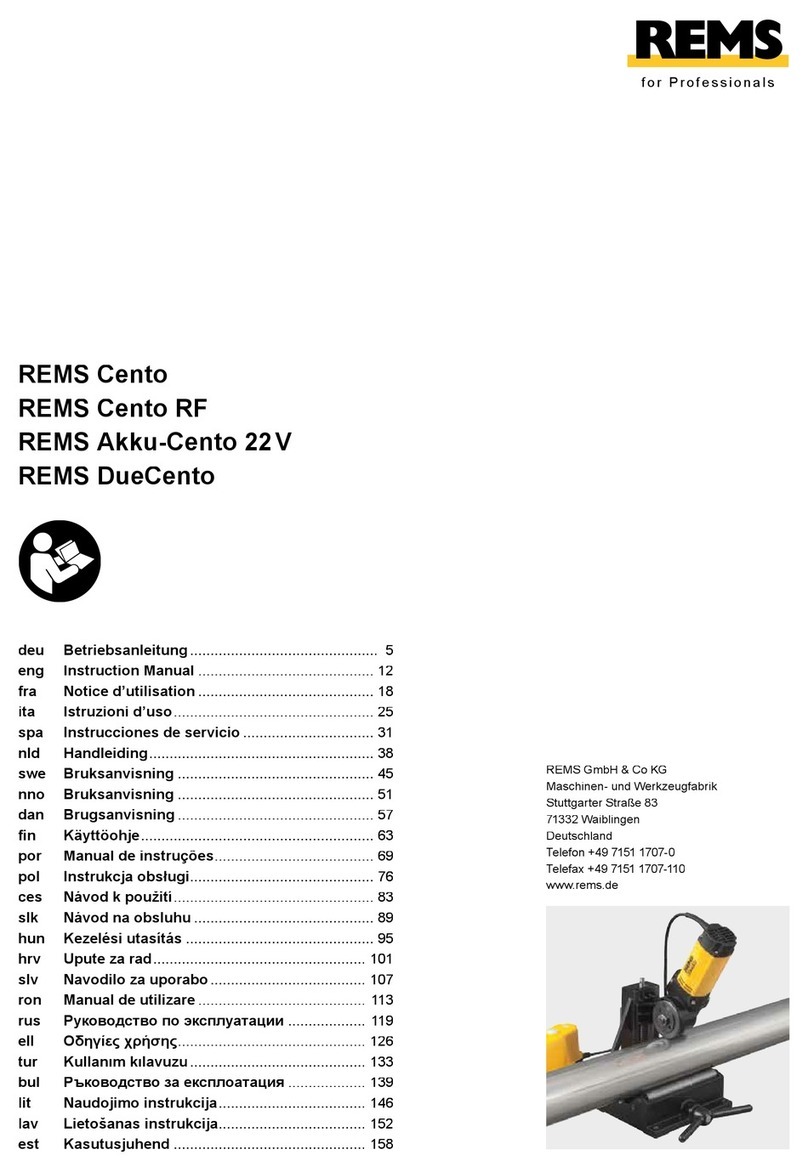
REMS
REMS Cento instruction manual
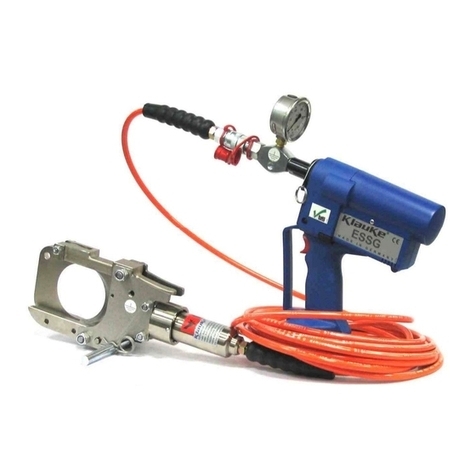
Textron
Textron Klauke ESSG85/3 INSTRUCTIONS MANUAL AND SERVICE INSTRUCTIONS
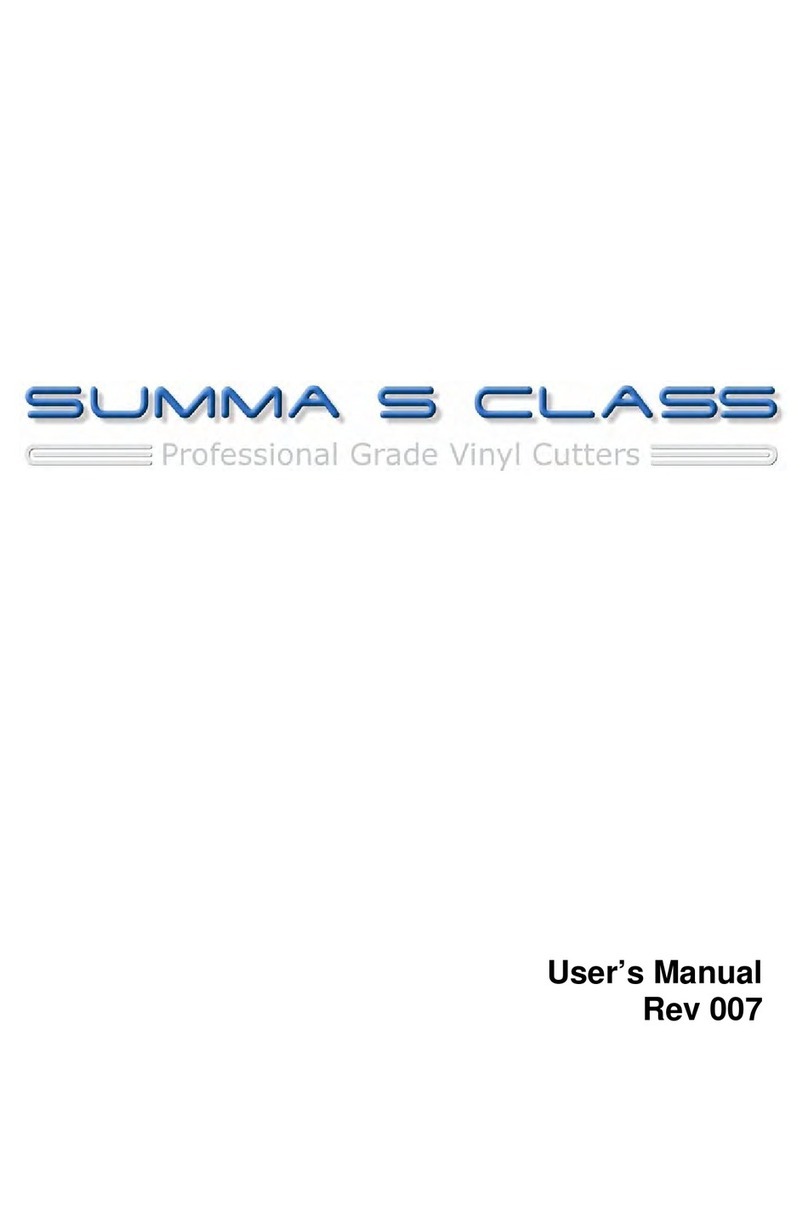
Summa
Summa S CLASS user manual

Roller
Roller ROLLER'S Smart-Cut instruction manual
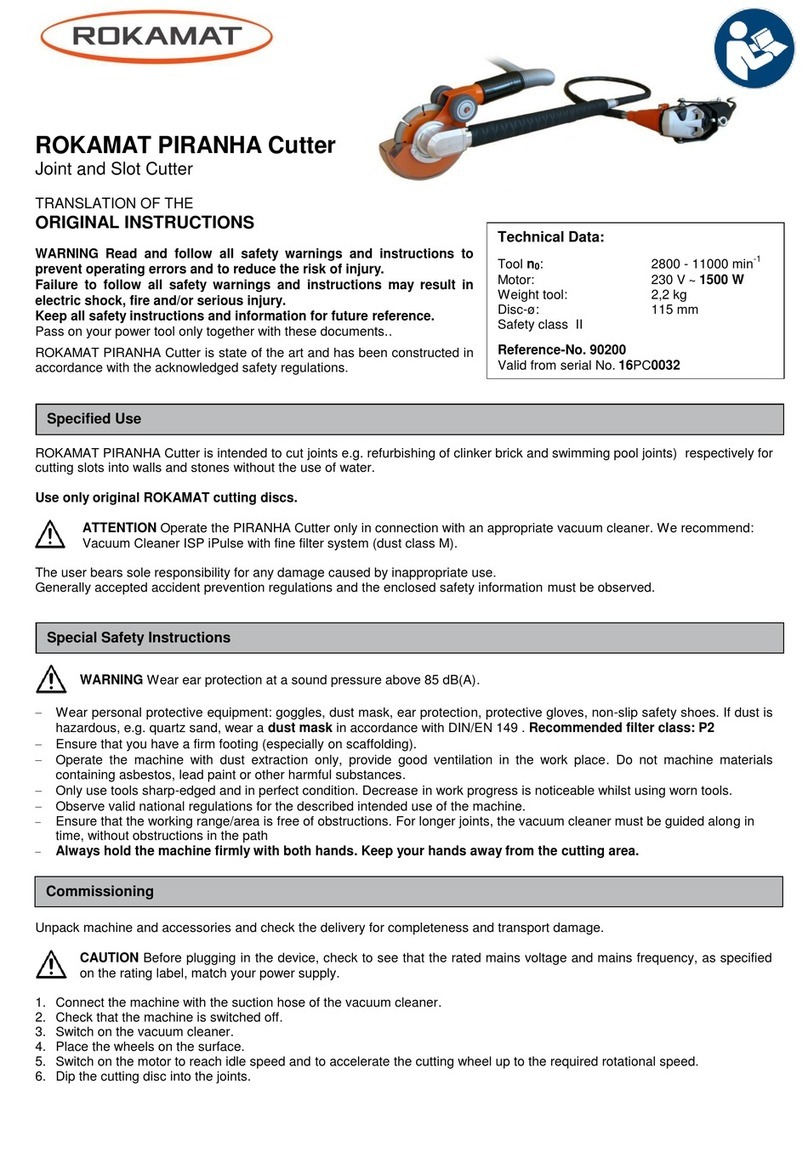
ROKAMAT
ROKAMAT PIRANHA Translation of the original instructions

Black & Decker
Black & Decker Tradesman Series manual
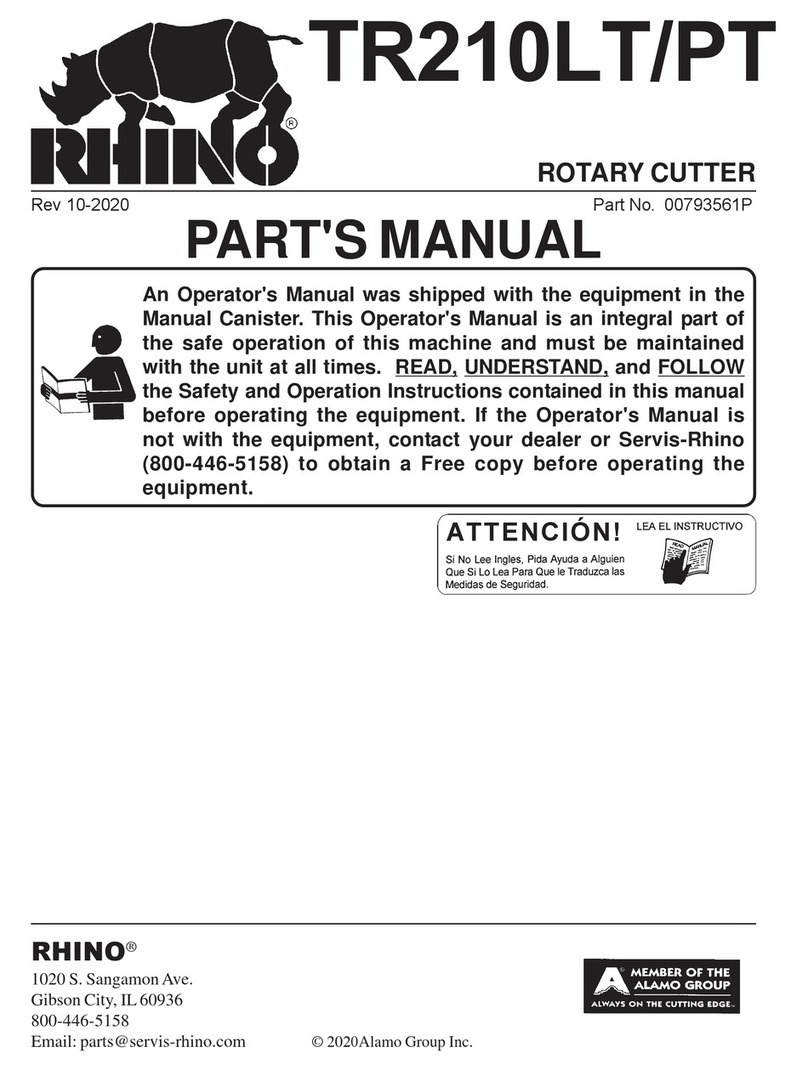
RHINO
RHINO TR210LT manual
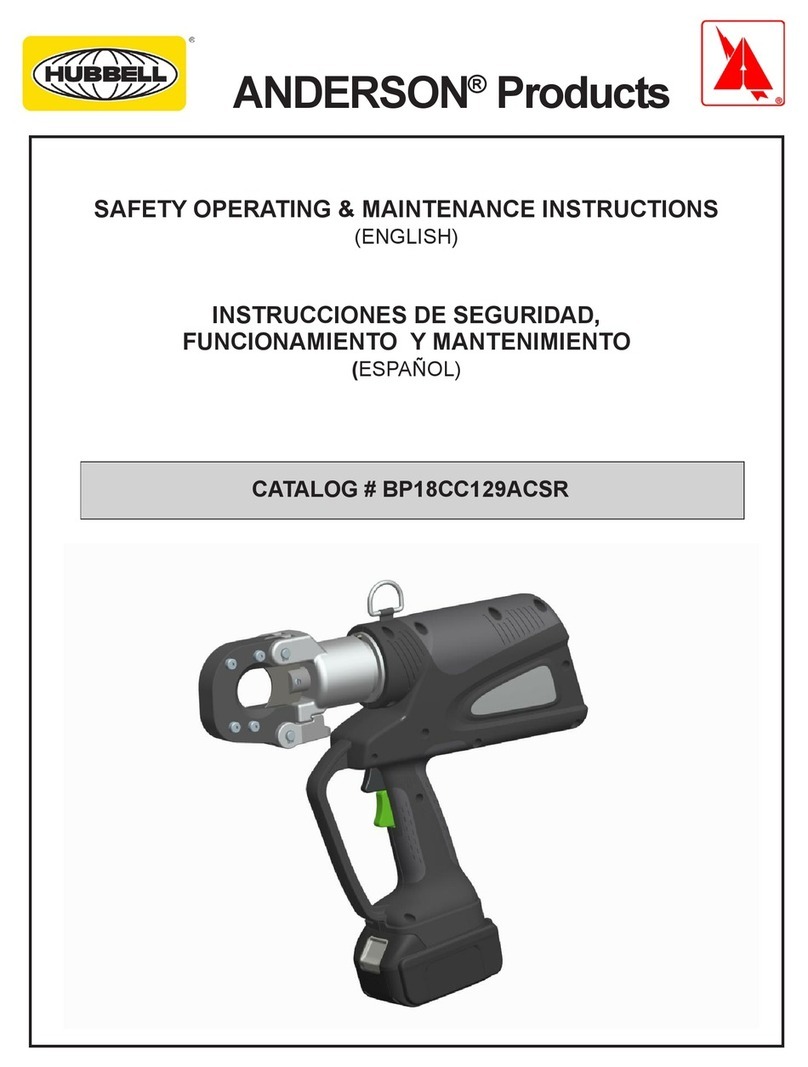
Hubbell
Hubbell ANDERSON BP18CC129ACSR SAFETY OPERATING & MAINTENANCE INSTRUCTIONS

Hypertherm
Hypertherm Command THC instruction manual
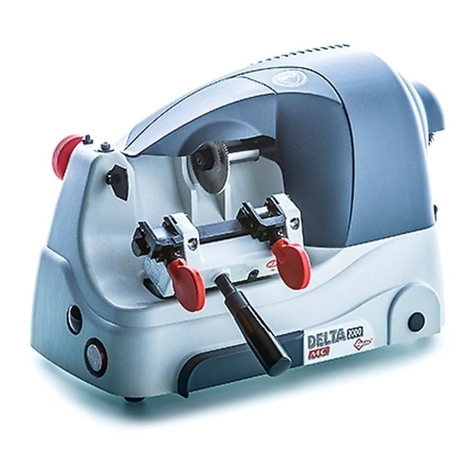
Silca
Silca Delta 2000 MC operating manual

